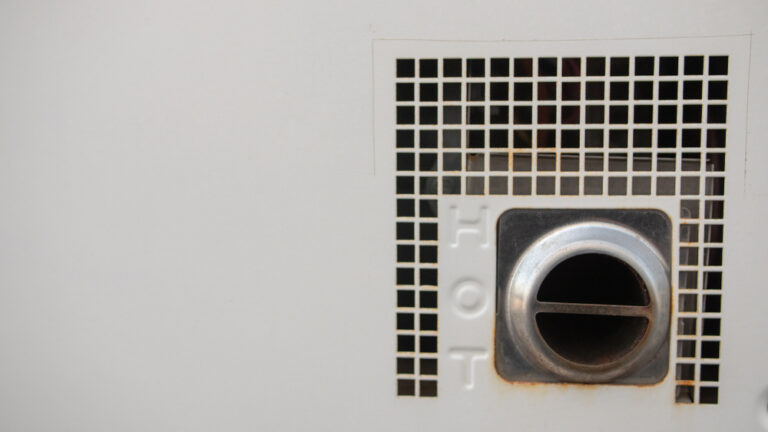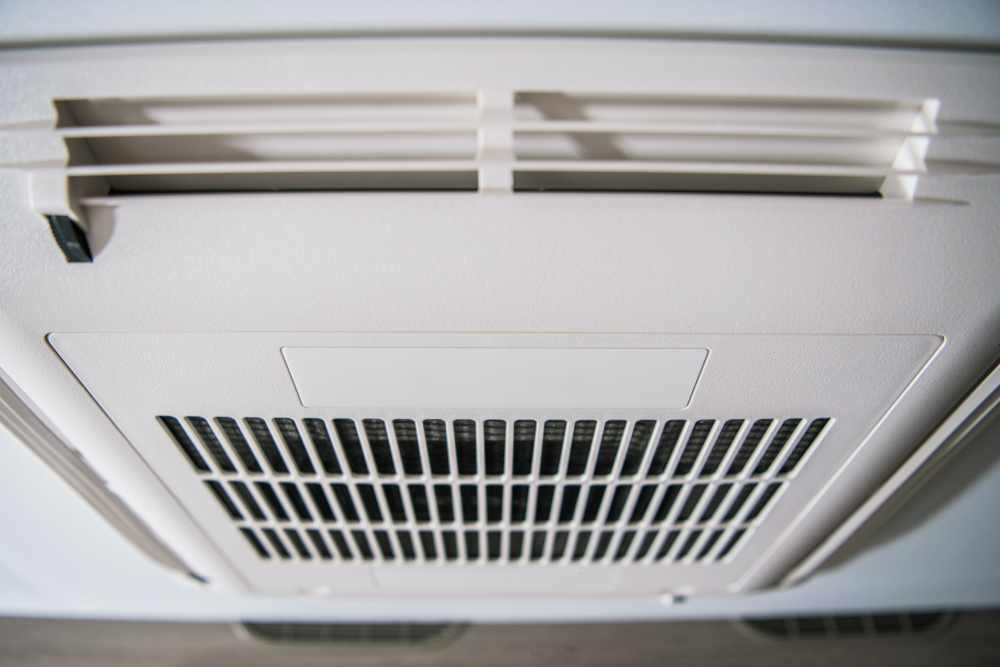
Is there anything better than that first stretch of fall when it’s finally cool enough to sleep with the windows open? Or that first day of bright, sunny weather after a long, cold winter? Those days are to be cherished, but unfortunately for most of us, they’re few and far between. If you travel any other time of the year, chances are you’ll need to run your RV air conditioner or heater.
These days, most modern RVs already have some sort of HVAC (heating, ventilation, and air conditioning) system as a standard feature. But if you’re purchasing an older camper or trailer, you might need to install your own RV AC unit. Looking for answers? We’re here to help! Read on to learn more about your RV air conditioner and heater.
What to Know About Your RV HVAC System
Using the HVAC system in your RV seems like it should be an intuitive process, but there are a few things that make it different from the system inside your house or apartment. For starters, your RV most likely has some sort of rooftop AC unit, unless you have a large motorhome air conditioner that operates more like central AC. An RV thermostat also tends to be more finicky than one at home — many times, the reading on your thermostat doesn’t quite match up with the actual temperature inside your rig.
When you’re connected to a power source, powering your HVAC system isn’t a problem. But when you’re driving down the road, it can get pretty hot if your only source of cool air is coming from the vents at the front of your vehicle. When you’ve got the whole family in the back, you may need to run your generator so you can use the rooftop unit to cool things down.
If you’re looking to install a second air conditioner in your RV or put in new camper AC unit, you’ll need to purchase one with the correct BTU rating for the size of your vehicle. The Dometic air conditioner and Coleman air conditioner are two AC units made specifically for RVs.
You can also choose a portable air conditioner, which is easier to install but can take up more space. Ultimately, it’s all about making the right decision for your particular RV. For more guidance on choosing the best model, check out this companion article on RVShare.com.
Using Your RV Furnace
Most RV furnaces use propane to keep your camper nice and toasty. When you set your thermostat, the furnace will kick on to blast your space with heat until the area reaches the correct temperature. Then, it will turn off until the temperature dips again.
If you’re using a propane furnace, be sure to have a working carbon monoxide detector inside your RV. Although furnaces are a safe way to heat up your living space, leaks unfortunately happen from time to time, so it’s best to be prepared.
Other RV Heater Options
On a chilly night that’s not quite freezing, you may not want to use up all of your propane. Depending on your RV, you may be able to heat up your space with the electrical heat system. If that’s not an option, you can always buy a small portable space heater to keep you warm in a smaller area. These days, you can even purchase an electric furnace, which is more eco-friendly to operate than one that uses propane.

RV Air Conditioner Repair
Problems with your RV air conditioner can be extremely frustrating. As fun as it is to go RV camping, it’s not so great when you’re sweating too much to have a good night of sleep. If you’re having issues with your system, we can give you a few ideas of RV AC parts to investigate.
First, make sure to clean the interior and exterior vents of your air conditioning system to keep your motorhome parts running smoothly. By regularly using a handheld vacuum to get rid of dust and debris, you can save yourself a lot of headaches in the future! Just like you would do at home, be sure to regularly change out your RV air conditioner filters.
You may also want to take a look at the plastic cover that goes over the top of your RV rooftop AC. Because so many RVs have the air conditioner on the roof, these systems can be exposed to rain, snow, sun, and other harsh weather that can eventually break down the plastic shroud. If you notice your cover looks damaged, you can easily buy a replacement. To keep your air conditioner protected in the future, you can even buy a vinyl cover to throw on top of the rooftop unit when it’s not in use.
If you have some level of technical skills, you can also check out your air conditioner’s cooling fins. These crucial components can sometimes become bent, leading to problems with your system. For more DIY repair tips, check out our guide here.
When in doubt, don’t be afraid to call in a professional! Depending on your city, you can either call a regular HVAC repair person to come to your location or find a mechanic where you can drop off your RV.
This post contains affiliate links.






